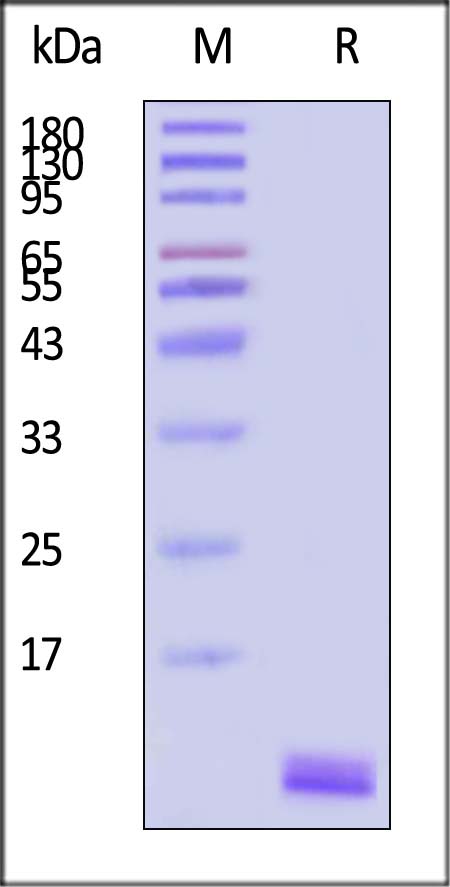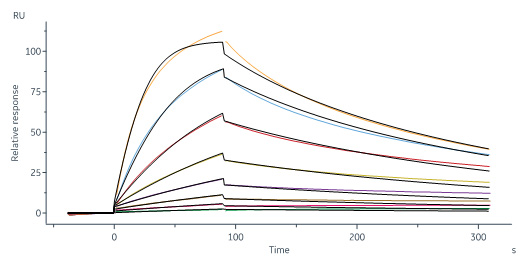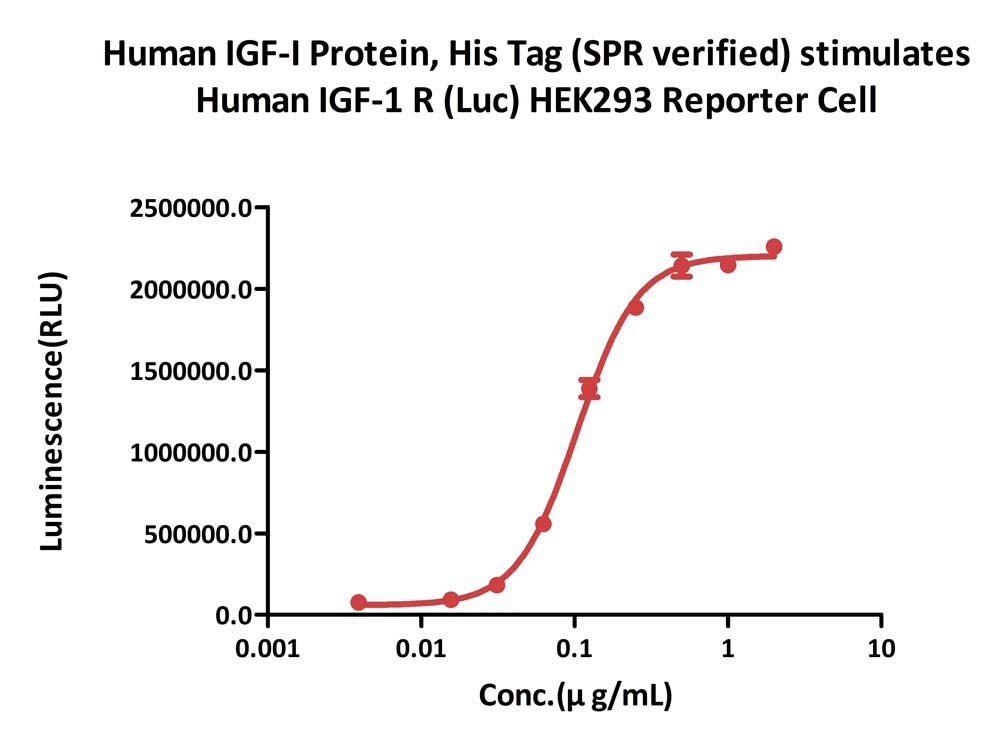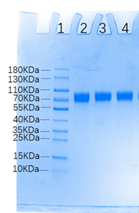分子别名(Synonym)
IGF-I,IGF1A,somatomedin C,MGF
表达区间及表达系统(Source)
Human IGF-I Protein, His Tag (IG1-H5245) is expressed from human 293 cells (HEK293). It contains AA Gly 49 - Ala 118 (Accession # P05019-1).
Predicted N-terminus: His
Request for sequence
蛋白结构(Molecular Characterization)

This protein carries a polyhistidine tag at the N-terminus.
The protein has a calculated MW of 9.5 kDa. The protein migrates as 12 kDa when calibrated against Star Ribbon Pre-stained Protein Marker under reducing (R) condition (SDS-PAGE) due to glycosylation.
内毒素(Endotoxin)
Less than 0.1 EU per μg by the LAL method.
无菌(Sterility)
Negative
支原体(Mycoplasma)
Negative.
纯度(Purity)
>90% as determined by SDS-PAGE.
制剂(Formulation)
Lyophilized from 0.22 μm filtered solution in PBS, pH7.4 with trehalose as protectant.
Contact us for customized product form or formulation.
重构方法(Reconstitution)
Please see Certificate of Analysis for specific instructions.
For best performance, we strongly recommend you to follow the reconstitution protocol provided in the CoA.
存储(Storage)
For long term storage, the product should be stored at lyophilized state at -20°C or lower.
Please avoid repeated freeze-thaw cycles.
This product is stable after storage at:
- -20°C to -70°C for 12 months in lyophilized state;
- -70°C for 3 months under sterile conditions after reconstitution.
质量管理控制体系(QMS)
电泳(SDS-PAGE)

Human IGF-I Protein, His Tag on SDS-PAGE under reducing (R) condition. The gel was stained with Coomassie Blue. The purity of the protein is greater than 90% (With Star Ribbon Pre-stained Protein Marker).
活性(Bioactivity)-SPR

Biotinylated Human IGF-I R, His,Avitag (Cat. No. IGR-H82E3) immobilized on CM5 Chip can bind Human IGF-I Protein, His Tag (Cat. No. IG1-H5245) with an affinity constant of 33.9 nM as determined in a SPR assay (Biacore 8K) (QC tested).
Protocol
活性(Bioactivity)-Bioactivity CELL BASE

Human IGF-I Protein, His Tag (Cat. No. IG1-H5245) stimulates Human IGF-1 R (Luc) HEK293 Reporter Cell. The EC50 of the effect is 0.104 µg/mL (Routinely tested).
Protocol
 +添加评论
+添加评论
- 132XXXXXXX7
- 买的这个带Fc标签的蛋白用来做动物免疫,因为免疫动物对蛋白的质量要求还挺高的,就跑了个电泳,做了个液相,质检结果看上去纯度还可以,希望能筛选到合适的抗体

 >
>- 2021-9-1
背景(Background)
Insulin-like growth factor 1 (IGF-1) is also known as somatomedin C, IGF1A, IGFI, sulfation factor, and is a hormone similar in molecular structure to insulin. It plays an important role in childhood growth and continues to have anabolic effects in adults. A synthetic analog of IGF-1, mecasermin is used for the treatment of growth failure. IGF-1 consists of 70 amino acids in a single chain with three intramolecular disulfide bridges. IGF-1 has a molecular weight of 7649 daltons. IGF-1 is produced primarily by the liver as an endocrine hormone as well as in target tissues in a paracrine/autocrine fashion. IGF-1 binds to at least two cell surface receptors: the Insulin-like growth factor 1 receptor, abbreviated as "IGF1R", and the insulin receptor. The IGF-1 receptor seems to be the "physiologic" receptor - it binds IGF-1 at significantly higher affinity than the IGF-1 that is bound to the insulin receptor. Like the insulin receptor, the IGF-1 receptor is a receptor tyrosine kinase - meaning it signals by causing the addition of a phosphate molecule on particular tyrosines. Its primary action is mediated by binding to its specific receptor IGF1R, present on many cell types in many tissues. Binding to the IGF1R, a receptor tyrosine kinase, initiates intracellular signaling; IGF-1 is one of the most potent natural activators of the AKT signaling pathway, a stimulator of cell growth and proliferation, and a potent inhibitor of programmed cell death. Insulin-like growth factor 1 has been shown to bind and interact with all the IGF-1 Binding Proteins (IGFBPs), of which there are six (IGFBP1-6). Specific references are provided for interactions with IGFBP3, IGFBP4 and IGFBP7.























































 膜杰作
膜杰作 Star Staining
Star Staining















